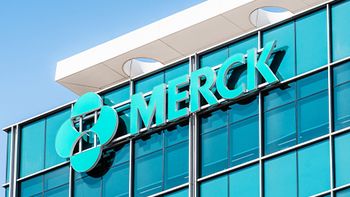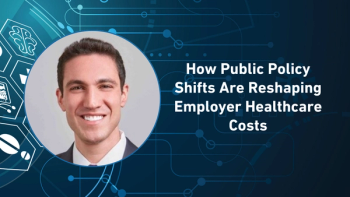
- Pharmaceutical Commerce - February 2024
- Volume 19
- Issue 1
Who Moved My Prescription? Part II
An analysis of the two main new models for pharmacy—unique direct—to-consumer for brands and cash pay for generics—and what members of industry think about them.
In my last column, I described the macro environment and the drivers that are causing retail pharmacy to splinter into new models. This issue’s column will explore the models themselves, the momentum behind them, and how the patient, prescribers, legacy pharmacies, and payers think about them.
Out of the gate, it’s helpful to consider how a traditional retail pharmacy views its business by the units and dollars, as both provide insight as to how pharmacy looks at its own model operationally and financially.
By the dollars, roughly 85% of the revenue volume for a traditional retail pharmacy is branded dollars, while 15% is generics. As reimbursement values are somewhat standard across the retail pharmacy landscape, the relative profit of the business depends upon how the retailer buys its brands and generics.
Most retail pharmacies buy their brands and generics through pharmaceutical full-line wholesalers on a bundled model.
To achieve an aggressive cost-less—4.5% to 6% on brands, these pharmacies pay a 10% to 15% premium for generics. National chains that are members of the purchasing alliances, such as Red Oak, Walgreens Boots Alliance Development (WBAD), and Clarus One buy generics at an advantage of 10% to 15% below what smaller retailers buy but pay a higher cost-less—3.5% to 4% for brands. This exacerbates the frustration from large national chains, as they see a greater loss on brands than their smaller counterparts but have perhaps forgotten or don’t understand how advantageous their generic purchasing can be given the ultimate dollars. With the exception for Medicaid, retail pharmacies are reimbursed under a bundled model as well, with the basic concept of breaking even on brands while being strongly incented to favor generics over brands. So, when a pharmacy indicates they are losing on brands, that’s not entirely true because they’re being compensated in aggregate across the product mix.
By the units, the plot thickens. Ninety-two percent of the units/prescriptions are generics, and 8% are brands. Of the 8% that are brands, roughly 80% of these are driven by the top-50 prescription products. This leaves well over 2,000 branded prescription products accounting for less than 2% of the overall units flowing out of pharmacy. Given that these are slower moving, new, or somewhat novel brands with the relative low volume, the pharmacy is not structured to optimally service these products operationally. As a result, any issues with finding the product, helping the patient with access and affordability, and any patient services required result in too high of a cost to serve to offset the intended break-even on the brands.
This problem is of key concern to branded manufacturers launching ew products. And as mentioned in my
Enter the two main new models for pharmacy: unique direct, exclusive, limited distribution models for brands, and cash pay for generics.
Brand products that are suited for direct, exclusive, limited distribution models are likely to fall in the 2% of pharmacy units. This is the situation where connecting a prescription to a pharmacy that is capable and willing to properly process and dispense becomes necessary to ensure an optimal patient journey. Similar to how our industry has configured specialty pharmacy, our industry has been developing new options to work in exclusive and limited pharmacy models that work very well with tech-enabled hubs such as Asembia and PhilRx. This was how Biohaven launched Nurtec: it used this contemporary strategy to incubate early sales and then evolve to a more traditional model once demand was more established.
The direct model has been around for decades, but has experienced extremely limited uptake as new models for pharmacy—such as home delivery—hadn’t been fully built out or adopted by consumers. With the growth of the cash pay and lifestyle pharmacies, this is changing. Out of the gate on Jan. 4 of this year, Lilly launched its direct-to-consumer model, Lilly Direct, for its obesity drug, Zepbound. From articles related to the topic, the drivers appear to be three-fold:
- The manufacturer feels it is competing with the contemporary models of the cash pharmacies such as Ro that manage the patient to choose the Lilly or Novo Nordisk options and even their own compounded semaglutide.
- The patient may struggle with insurance coverage that can be both spotty and bring high out-of-pocket cost sharing.
- The traditional retail pharmacies struggle to not lose money on these prescriptions for all the reasons described.
While Lilly’s program is not entirely new—as others such as Pfizer and AstraZeneca have deployed similar options for Lipitor and Nexium, respectively—what is different is that Lilly launched this model for a new and novel blockbuster therapy, and is directly competing with a payer-pharmacy-wholesale channel that struggles to support these types of products. In summary, it’s a great analog for how brands struggle to come to market and the degree to which innovation is being considered to ensure patients have both access to product and the proper support from their pharmacy.
This brings us back to the cash pay market, which has grown from 4% in 2018 to almost 10% by the end of 2023. The momentum has been so profound that CVS Health and Cigna announced and launched their own cash pay models, True Cost and Clear Network, respectively. To date, the products that the cash pharmacies have focused on are generics, but it appears more brands may be on the way. As traditional retail pharmacies struggle with brands economically and operationally, the manufacturer is left with little options to innovate.
Another example of the pursuit of a branded cash pay model in 2023 was for Yusimry by Coherus Pharmaceuticals. As a biosimilar to Humira (adalimumab), the company turned to Mark Cuban’s Cost Plus Drug Company. On the surface, most people we connected with in the industry didn’t understand the move. The product would price at approximately $4,500 annually, which seems high for a patient, but peeling back the onion on the state-of-the-state for high-deductible plans might offer some insight. It appears that Coherus may not have been able to secure product coverage and was forced to the cash market, but then turned and assumed that there are patients on a branded drug in the class that perhaps couldn’t meet their deductible. Thus, this cash option was cheaper than using insurance.
As these are just examples of what is transpiring, 2024 will be a landmark year to watch for sure. With each use of a new pharmacy channel comes another crack in what our industry considers the “traditional retail pharmacy model,” causing the patient to reconsider their pharmacy options.
About the Author
Bill Roth is the SVP of IntegriChain’s consulting business, which includes Blue Fin Group, a strategy consulting company he started in 2001, and the IntegriChain advisory services business.
Articles in this issue
almost 2 years ago
Pharmaceutical Commerce - February 2024 Issue (PDF)almost 2 years ago
The Value of 3PLsalmost 2 years ago
New Year, New Aspirationsalmost 2 years ago
Access Insights and Information Aboundalmost 2 years ago
A Look at the Medicare 'Extra Help' Programalmost 2 years ago
The Path for Prescription Drug Salesalmost 2 years ago
A Pharma Pricing and Agreements Primer in Today's Complex Landscapealmost 2 years ago
The Impact of 340B on Commercial Contractsalmost 2 years ago
DSCSA 2024 or 2023 Déjà Vu?Newsletter
Stay ahead in the life sciences industry with Pharmaceutical Commerce, the latest news, trends, and strategies in drug distribution, commercialization, and market access.



